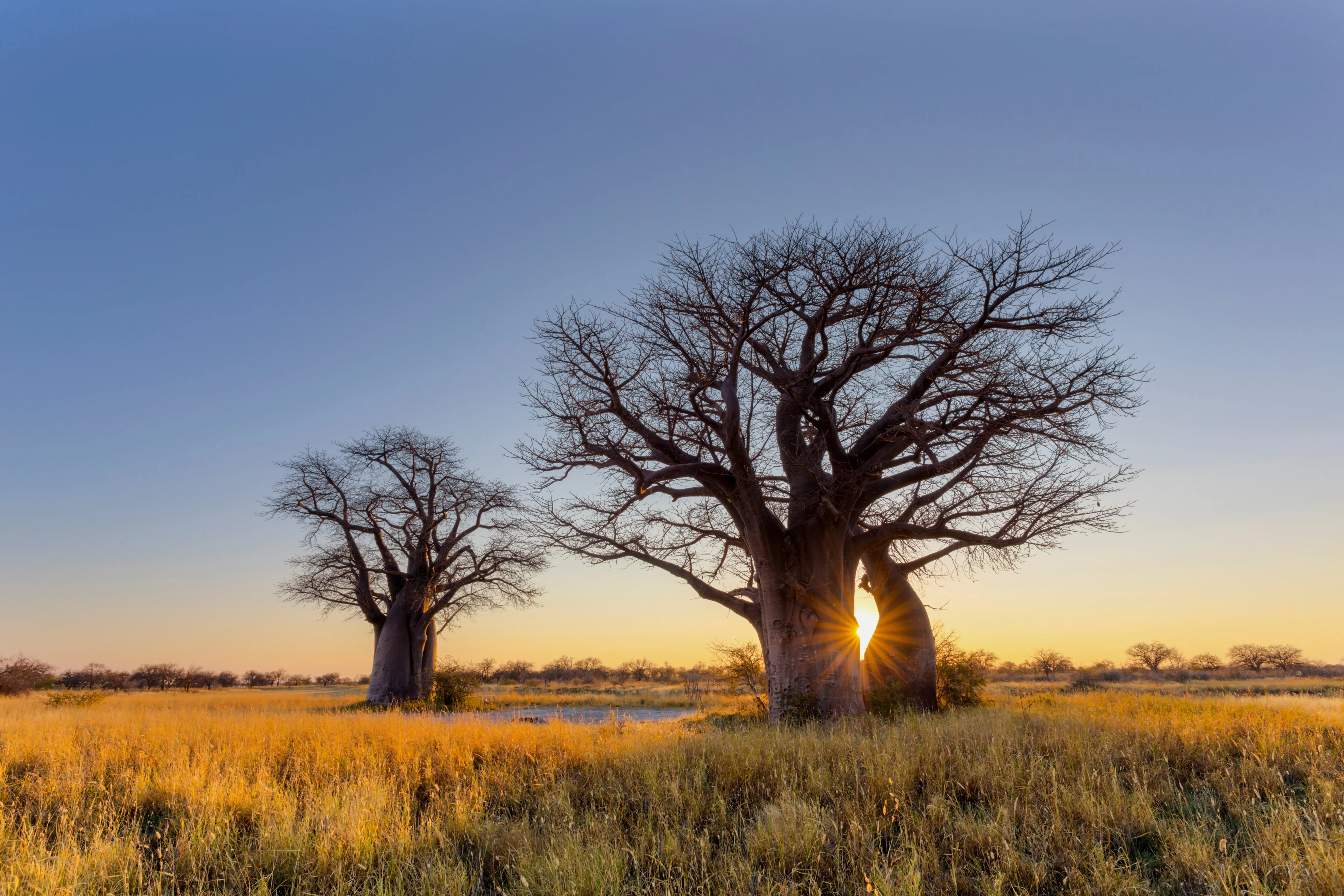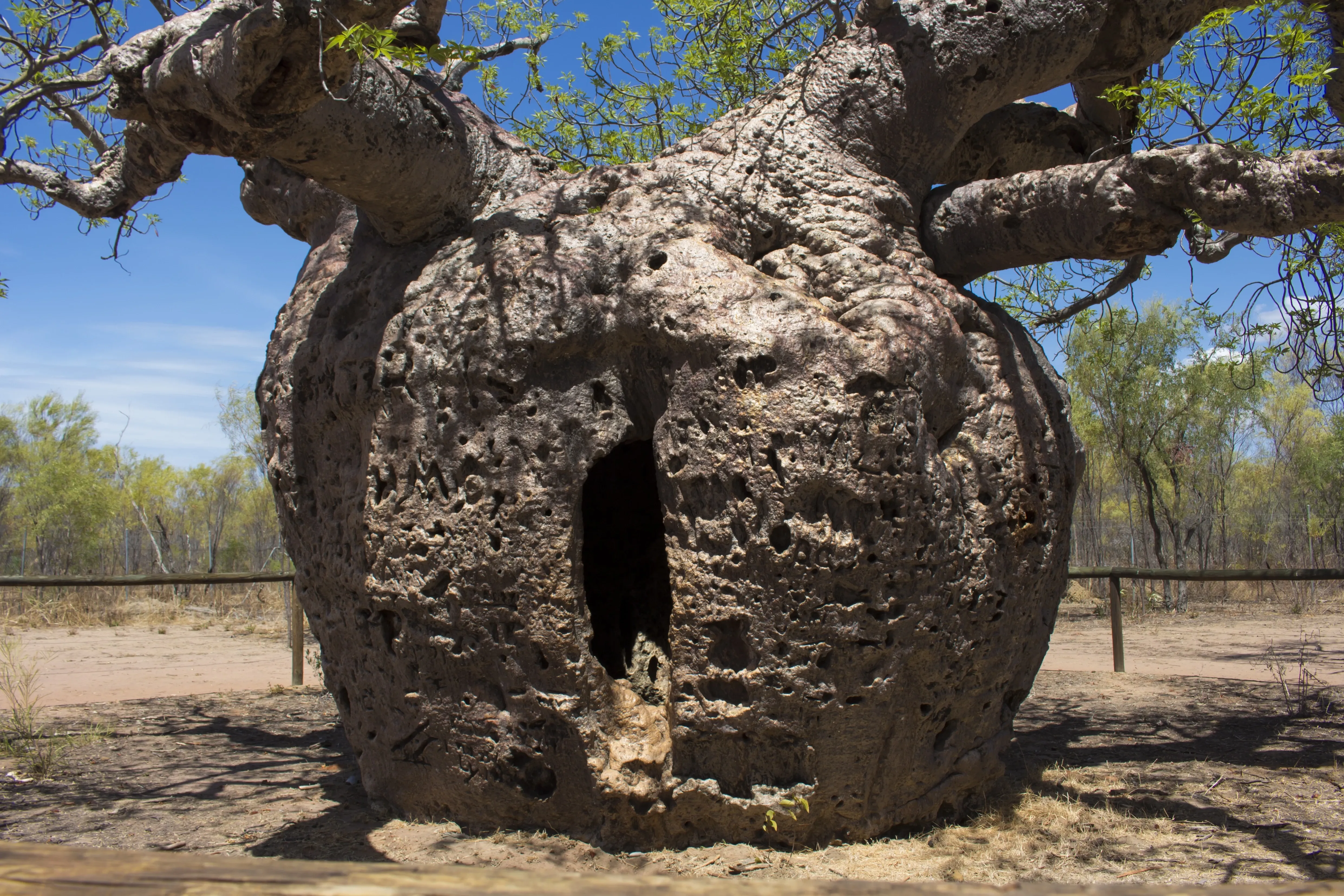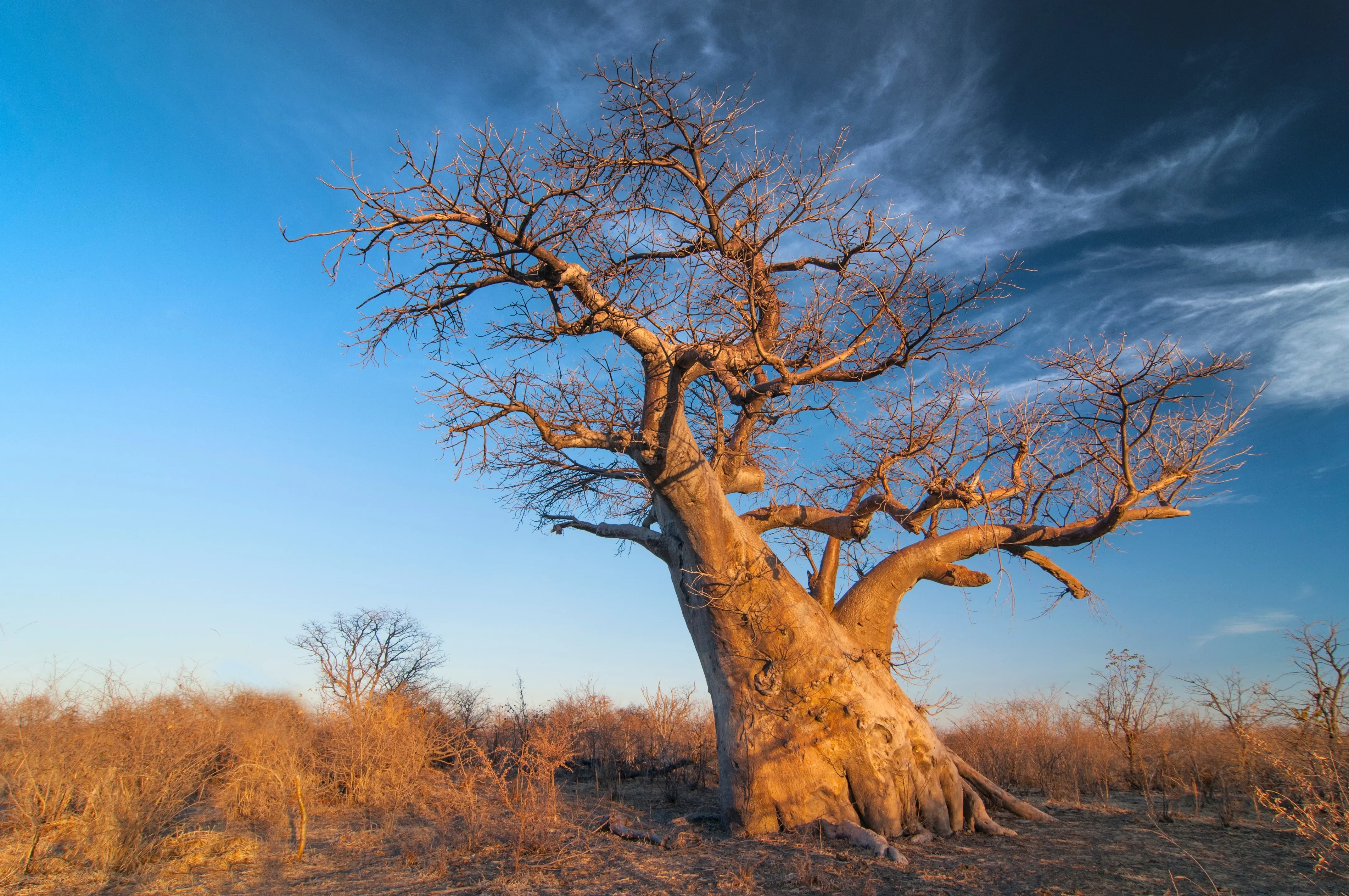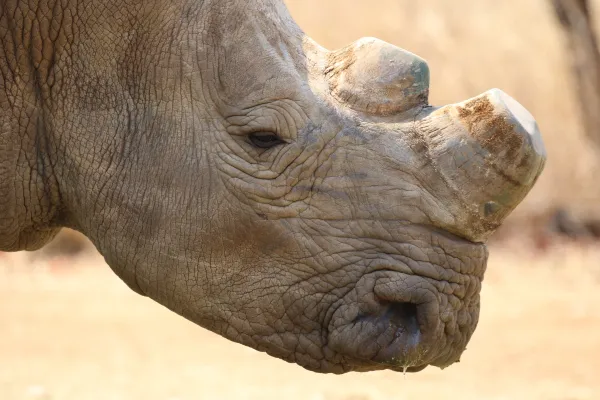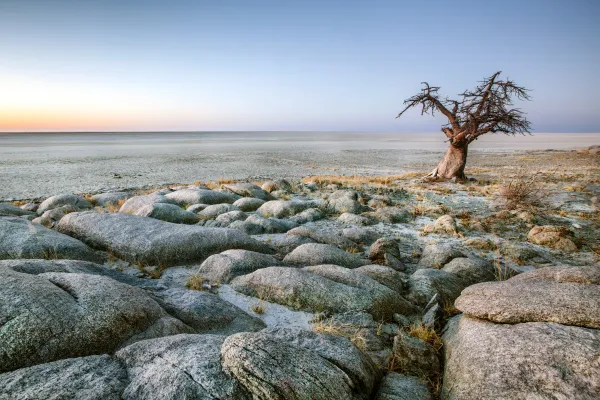Baobab - Africa's iconic upside-down tree
The silent silhouetted sentinels of the African landscape have a fascinating story to share. Normally found in drier arid zones where they flourish, the enormous fleshy trunk and branches act as pulpy sponges making the baobab the largest succulent plant on earth.
Africa’s ancient giants
It is estimated that baobabs (also known as upside-down tree) can grow up to 2500 years old, although there is some doubt about the accuracy of the lifespan of these prehistoric-looking plants. As they are deciduous trees without the typical annual ring growth of hardwood trees that cannot be aged in the same way, and rely on the scientific process of carbon isotope dating. There is a Namibia tree positively aged at 1275 years, but I believe that the safari romantic in all of us would like to believe that they grow older than that!
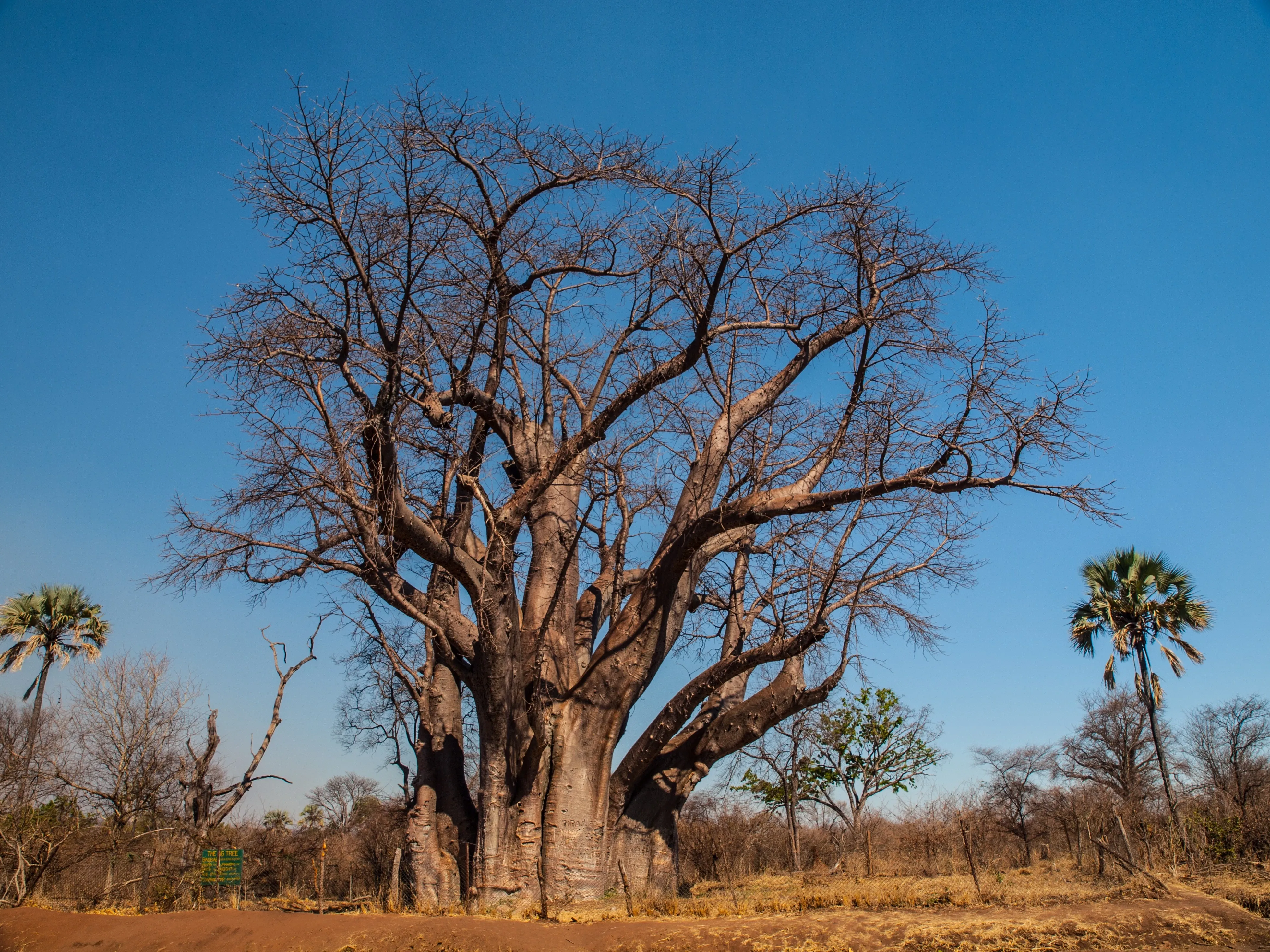
Livingstone’s “Big Tree” in Zimbabwe
One of largest and more famous specimens is known as “The Big Tree” and it can be found just west of Victoria Falls in Zimbabwe, where it was described by David Livingstone in his journals of 1855.
A conservative estimate of the age of the tree would indicate that it sprouted as a seedling sometime toward the end of the Roman empire, and has stood towering over the Zambezi for centuries till the present day. It stands an impressive 25m in height and has a trunk circumference of over 40m…that means it would take 20 grown men, all standing with out-stretched arms and touching hand to hand, to circle the giant!
The baobab continues to attract and enchant modern day travellers and explorers that go out of their way to pass through. Rightly so, and The Big Tree has been awarded celebrity and monument status.
Famous specimens in Botswana
There are other well-known specimens that that would have at some point, been important landmarks for early explorers. Such baobabs still stand on the northern edge of the Makgadikgadi Pans in Botswana and served as landmarks for intrepid explorers such as the Green Brothers and James Chapman during their hazardous crossings of the old pans in the 1850s. Livingstone himself would make use of Chapman’s baobab (and find his engravings on the tree) some 20 years later, admitting that the tall tree in the dry, flat and featureless landscape probably saved his life. Carbon dated at about 1350 years of age, Chapman’s baobab sadly died and fell in 2006.
Multifunctional baobabs
Somewhat amusingly, other iconic trees have been hollowed out and used as a post-office, shelters and even a World War II officer’s bar. In Kasane on the Chobe River in Botswana, before a proper police station could be established, a baobab was used as holding cell!
Baobabs – unique and bizarre
As the largest and most imposing tree throughout most of the continent, this somewhat strangely shaped and otherworldly plant is unique as it is odd.fiberhe pulp and fibre does not have woody structure, the baobab can technically be classified as more of a huge species of grass, than a tree. It is estimated that the pulp contains about 60% water, and as a result this slow growing giant contains many hollows, crevices and caves that store water deep into the dry season, and have been used as emergency reservoirs for centuries.
Elephant strip the bark in the dry season, and may do irreversible damage to the tree in the process. The fruit, leaves and flowers are valuable food sources for many different animals. The pulp of the fruit is extremely nutritious and is used by people to make bread and a rather refreshing drink. The seeds, leaves and roots are also edible, so it is a valuable tree to survive the traditional way!
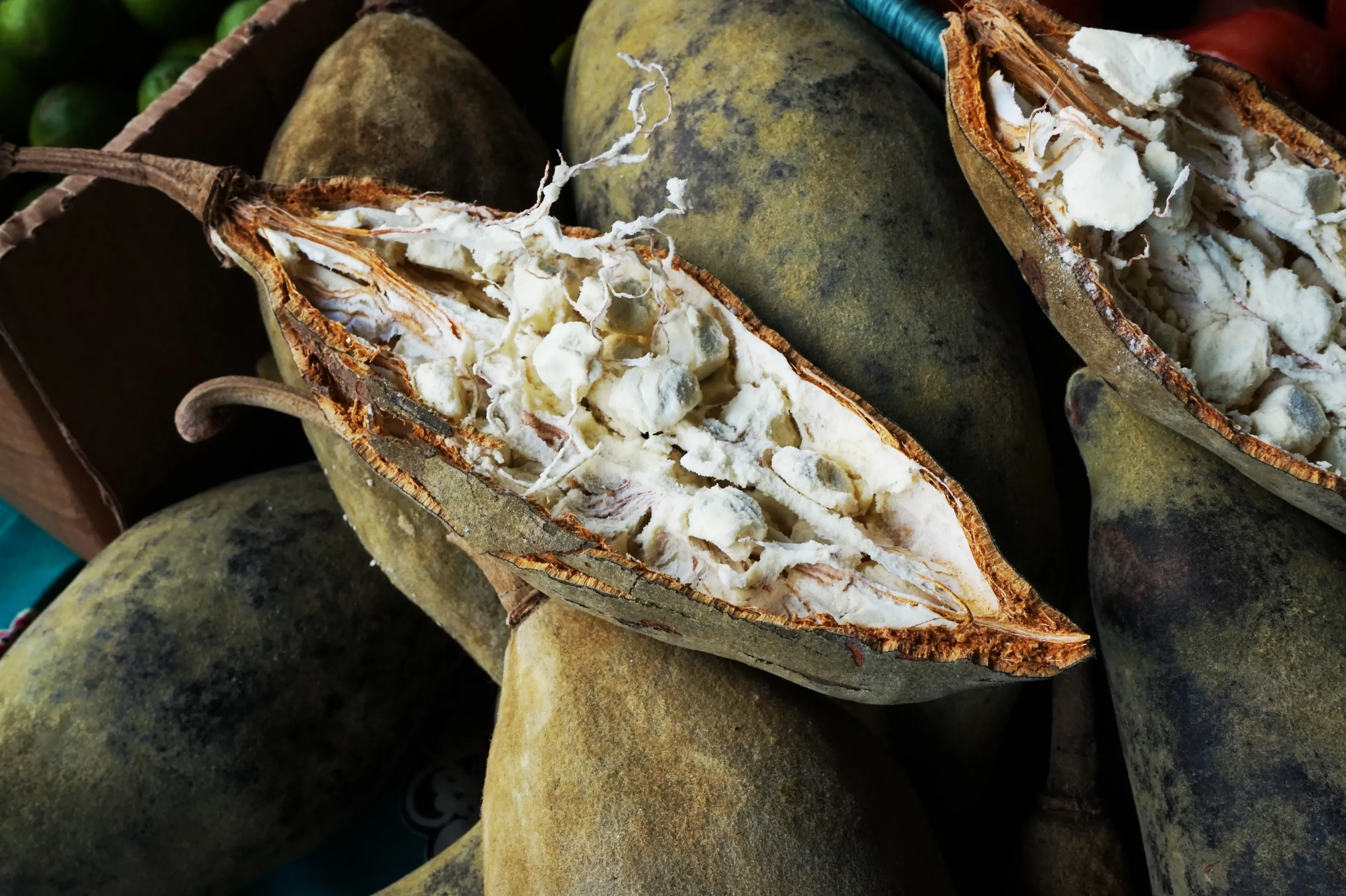
A tree of fables and legends
It is also a tree of fables and legend, as its many oddities did not go by unnoticed by the first people of the Kalahari: The San Bushmen. In the dry season, when the baobab has lost its leaves, the sprawling spindly branches resemble roots, and is known by Bushmen, accurately so I have to admit, as the ‘upside down tree’ and that it fell from the sky.
The fact that it takes a few years for a young baobab plant to resemble an adult (their leaves are different) also fascinated the Bushmen. If it didn’t grow from the earth, and its roots are on top, then it must have fallen from the sky!
Another curious characteristic of the tree is because of their light fibrous wood, they decompose really fast. With an estimated dry weight of some 50 tons above the ground, a large baobab can weather away completely once it dies, all within a few short years. The legend grew even more, as the tradition suggests that the tree is returned to the sky after it dies.
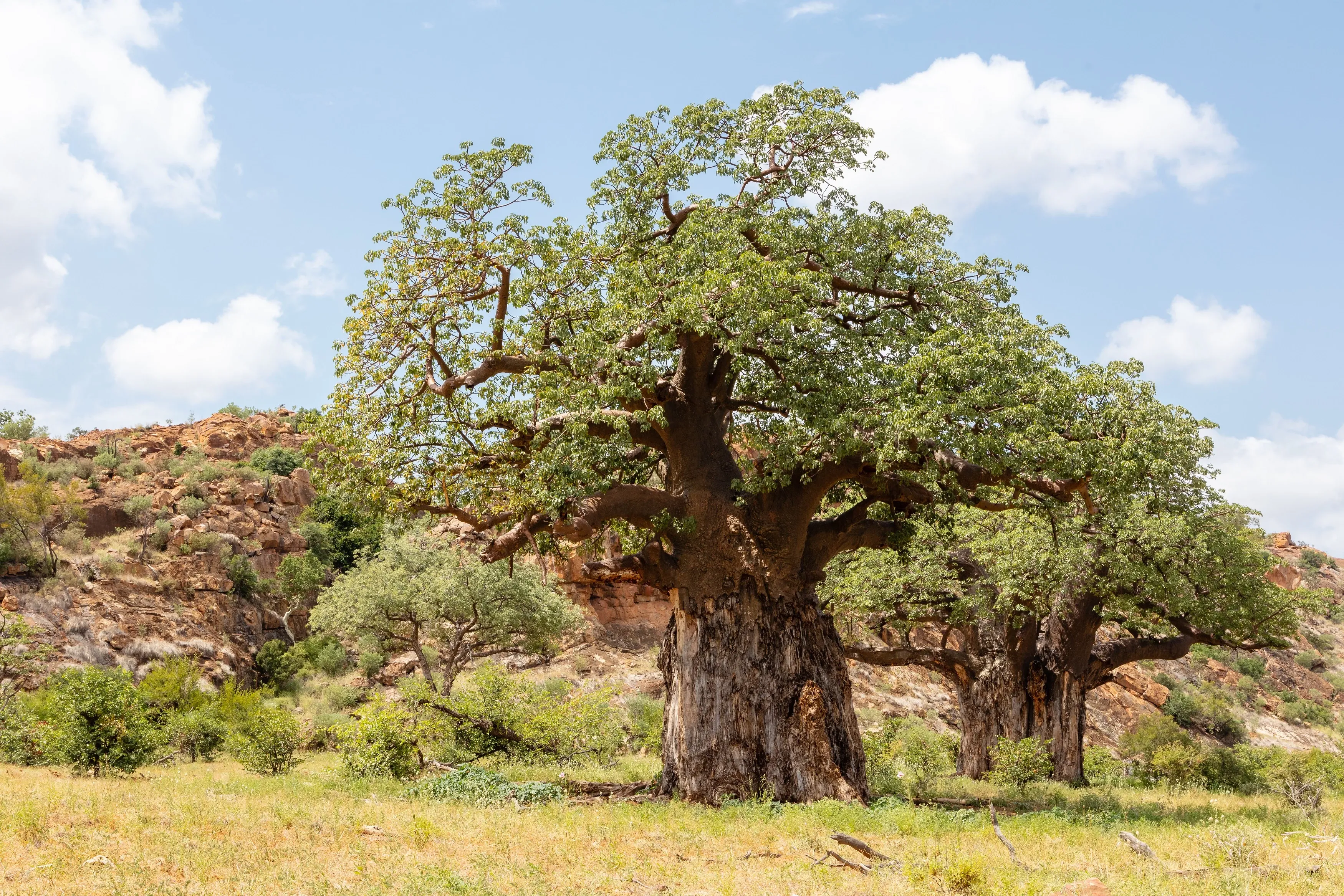
Impressive trees that fell from the sky
Baobabs are not the tallest trees in Africa and this honour goes to the mountain mahogany, which is found on the slopes of Mt Kilimanjaro, and can grow 80m high (incidentally the tallest tree in the world is a giant sequoia of California at an impressive 133m).
There is only a single species of baobab on the continent of Africa, although botanists are pointing to a second one. Curiously enough, the island of Madagascar boasts six different species of baobabs…perhaps the bushmen are correct after all!
Sign up for the newsletter
By clicking on “Subscribe now” I will subscribe to the Conscious Explorer newsletter with all the information about mindful travel. Information on the success measurement included in the consent, the use of the shipping service provider MailChimp, logging of the registration and your rights of revocation can be found in our privacy policy.
